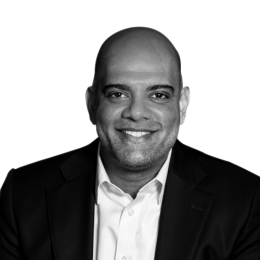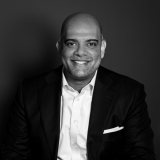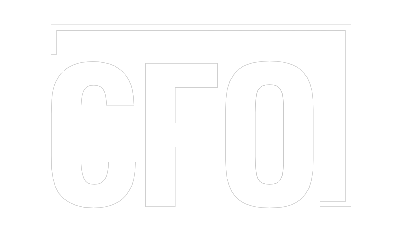‘Tis the Season for Technology-Based Budgeting (TBB)
We’re in the midst of every CFO’s favorite time of year: budgeting season.
The seasonal verbiage is actually quite apt, as these days, organizations tend to revisit budgeting concepts almost as frequently as we change seasons. Incremental budgeting — the approach by which CFOs use last year’s budget as the default base and makes incremental changes to prepare the go-forward budget — had long found favor in a dependably growing economy. However, COVID-induced volatility followed by a looming recession has made that more traditional approach lose some of its luster. Per the Wall Street Journal, in a volatile and cost-constrained market, many companies are instead looking to Zero-Based Budgeting (ZBB) — a process requiring CFOs to build their budgets from zero on an annual basis, justifying each expenditure — to help them navigate an uncertain landscape.
Taking cues from the economic outlook to revisit the budgeting model sounds like a smart idea, right? Not exactly.
First, despite its cost-cutting allure, ZBB is known for being bandwidth-intensive and complex. It’s also time consuming in those budgeting areas that may not actually impact results in any material way. For a PE-backed finance team already overwhelmed, overburdened, and resource-constrained (as most are), that can make ZBB particularly arduous and not worth the investment.
But it’s about more than just ZBB vs. incrementalism. While we have long argued that the budgeting process must be modernized, the actual underlying models really shouldn’t change according to season or economic outlook. The model itself must be more constant. What needs to change, instead, are the variables and tools used to “feed” the model — as well as the feeding frequency.
Enter: Technology-Based Budgeting (TBB).
TBB is an approach to budgeting that highlights the criticality of systems and digitization to the creation of accurate annual budgets, and unlike ZBB, it focuses on modeling the actionable areas of the business. TBB recognizes that the number of “inputs” that feed a budgeting exercise must increase, particularly in a volatile economy. Finance leaders must build budgets using metric categories that go well beyond traditional financial inputs — starting with financials, but also blending in operating metrics as well as macro-economic factors including leading and lagging indicators. That’s a difficult task to execute without the right tech stack to support it.
But CFOs must do more than tech-enabled annual planning. They must also use the combination of the three input categories (financial, operating, macro-economic) for more frequent dynamic forecasting, as well as for enhanced scenario planning to address potential business disruptions. The idea that a business should prepare one budget with one set of assumptions is not a best practice. In fact, it’s a risky practice in the current environment. TBB enables efficient and streamlined scenario modeling so that CFOs can build plans to address a wide spectrum of market moves and variances.
But, without the right tech stack supporting that forecasting and scenario planning effort, it’s not just a difficult task — it’s an impossible one.
Types of Tech:
There are three planning-centric technologies critical to TBB. These are the systems that, together, enhance visibility, allowing stakeholders to quickly identify underperformance variances and assess their root causes.
- The ERP System: The ERP system handles the standard accounting records (such as the general ledger and balance sheet), generates financial reports, and handles related transactions (such as invoicing and expense reporting). This system also commonly supports profitability analysis and revenue management. If we were to leverage an automotive analogy, the ERP is the engine in the car; it makes everything run.
- Data Analytics/Reporting Platforms: Here we are talking about data warehousing, data lakes, data marts with business intelligence for (self-service) data exploration and analytics. This is the dashboard; it tells the driver point-in-time information.
- A CPM Solution: A suite of technology tools, specifically those that focus on the digital enablement of finance (including close and consolidation, budgeting, forecasting, strategic modeling, and financial reporting functions). CPM complements ERP solutions and analytical reporting environments. A CPM solution is the GPS; it understands where the driver is going and helps them get there efficiently while re-routing for unforeseen obstacles.
It’s not just the existence of these systems within the tech stack that makes TBB possible; it’s also the existence of people who know how to make the systems work in harmony. That’s something for which CFOs have an urgent and acute need. According to Accordion’s most recent State of the PE Sponsor-CFO Relationship Report, PE firms believe their portfolio company finance team lack the competency to effectively utilize technology systems.
So why don’t CFOs have the right people to address system needs? There are two reasons:
First, they’re often not looking to hire, because hiring/resourcing incentives are misaligned. CFOs are under a microscope to manage and control costs. Hiring sophisticated talent costs money. Therefore, it’s an incentive mismatch. Second, even when CFOs recognize the need to hire (or are strongly encouraged to do so by their sponsor), the ongoing war for talent has made recruiting and retaining experienced FP&A and fintech experts difficult at best. For this reason, CFOs should consider external subject matter experts when it comes to tech-stack support.
Such external resources will have use well beyond the core three budget-centric systems. In fact, a fully optimized TBB approach includes more than ERP, CPM, and Data Analytics systems. It also includes pointed technology solutions, which can help automate and optimize performance—particularly in a cost-controlled environment. Here, we are talking about AR automated modules for optimizing collection, OCR technology for reading and matching invoices, and procurement tools for driving additional controls on spend.
Lest there be a concern about investing in tech during a downturn, it is important to realize that the core systems are even more critical in a downturn where accelerated visibility and decision making is critical. As far as the pointed technology solutions, these are the types of tools that require minimal up-front investments but provide immediate returns in terms of forecasting and planning, as well as increased collections, reduced costs, or operational improvements/efficiencies.
In order to build the tech-enabled budgeting, forecasting, and scenario planning approach that CFOs need in order to navigate a volatile economy, CFOs must ask and answer three critical questions. 1) How can I leverage technology to better enhance my existing budgeting model? 2) What are the right systems in which to invest? And 3) Who can I hire/retain to help build, integrate, and run the right architecture? All in all, the question for CFOs isn’t whether to ZBB or not to ZBB. It’s how to TBB.





